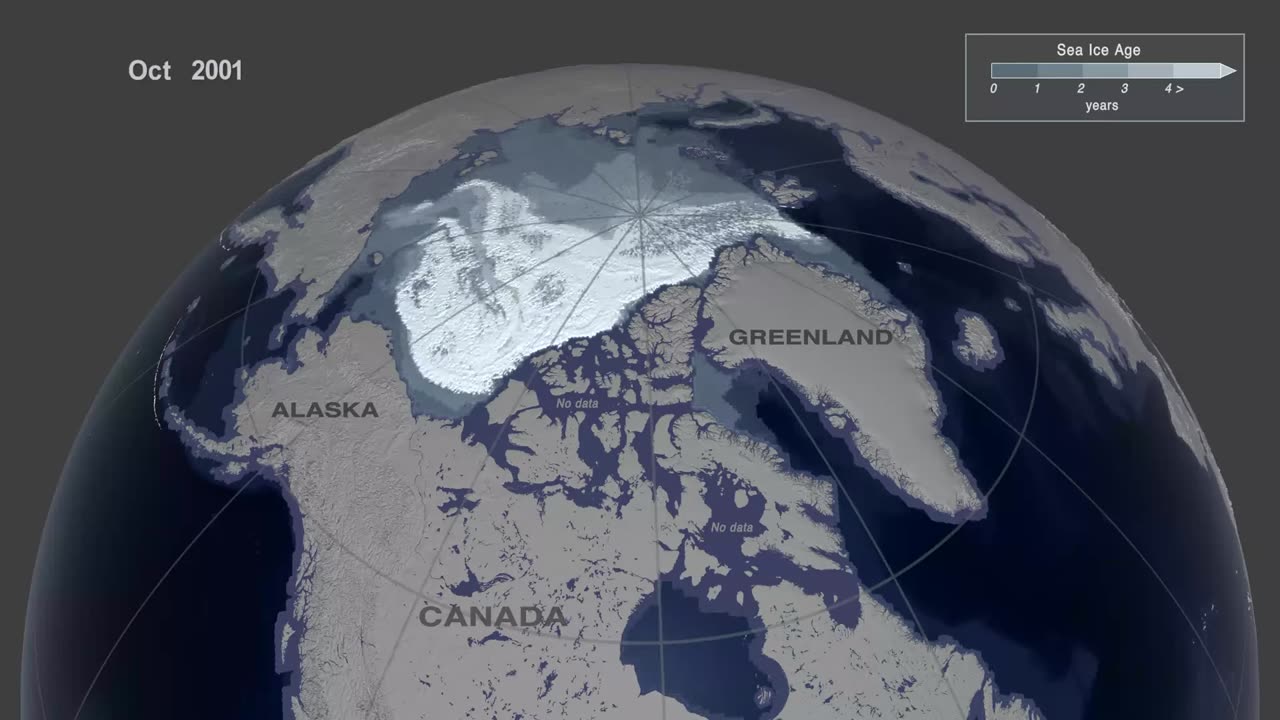Premium Only Content

NASA video "Weekly Arctic Sea Ice Age with Graph of Ice Age By Area: 1984 - 2019"
https://svs.gsfc.nasa.gov/cgi-bin/details.cgi?aid=4750&button=recent
This visualization shows the age of the Arctic sea ice between 1984 and 2019. Younger sea ice, or first-year ice, is shown in a dark shade of blue while the ice that is four years old or older is shown as white. The animation shows the seasonal variability of the ice, growing in the Arctic winter and melting in the summer. In addition, this also shows the changes from year to year.
One significant change in the Arctic region in recent years has been the rapid decline in perennial sea ice. Perennial sea ice, also known as multi-year ice, is the portion of the sea ice that survives the summer melt season. Perennial ice may have a life-span of nine years or more and represents the thickest component of the sea ice; perennial ice can grow up to four meters thick. By contrast, first year ice that grows during a single winter is generally at most two meters thick.
Note that data for the sea ice age is not available along the coastlines. The region where data is not available is shown in a dark lavender color.
Another version of this visualization includes a graph that quantifies the area covered by sea ice 4 or more years old in millions of square kilometers. See https://svs.gsfc.nasa.gov/4750.
Visualizers: Cindy Starr (lead), Horace Mitchell
For more information or to download this public domain video, go to https://svs.gsfc.nasa.gov/4750#27895
NASA Scientific Visualization Studio, Public domain, via Wikimedia Commons
-
 2:11:20
2:11:20
I_Came_With_Fire_Podcast
15 hours agoFar Left TROJAN HORSE | SPECIAL Forces in MEXICO | GERMANY under FIRE
23K13 -
 1:41:00
1:41:00
Darkhorse Podcast
12 hours agoIf Only We’d Known: The 265th Evolutionary Lens with Bret Weinstein and Heather Heying
153K36 -
 1:58:29
1:58:29
Conspiracy Pilled
3 days agoThe Vaccine Conversation (S5 - Ep17)
59.1K2 -
 11:22
11:22
Tundra Tactical
9 hours ago $4.23 earnedUSA vs Canada HOCKEY Fight: The Real PRIDE Fighting.
66.5K8 -
 54:43
54:43
LFA TV
1 day agoWhy Exposing Waste and Fraud Terrifies the Beltway | TRUMPET DAILY 2.19.25 7PM
61.2K10 -
 1:01:13
1:01:13
Candace Show Podcast
11 hours agoBlake Lively's BOMBSHELL Legal Filing | Candace Ep 149
131K151 -
 1:11:22
1:11:22
Vigilant News Network
14 hours agoElon Musk Shuts Down RFK Jr. Critics With One Powerful Statement | The Daily Dose
85.8K28 -
 1:12:23
1:12:23
Dad Dojo Podcast
1 day ago $2.49 earnedEP20: The Super Bowl and Solving The Economy
49.8K -
 4:49
4:49
Tactical Advisor
3 days agoBest Small Handgun Optics | CH PWS Shot Show 2025
34.8K2 -
 1:01:21
1:01:21
In The Litter Box w/ Jewels & Catturd
1 day agoI've Got Your Proof - Right Here! | In the Litter Box w/ Jewels & Catturd – Ep. 745 – 2/19/2025
114K34